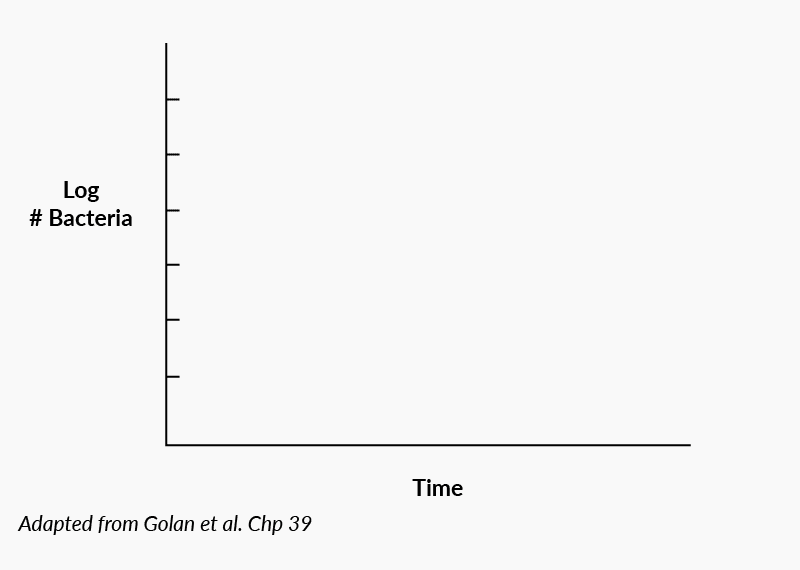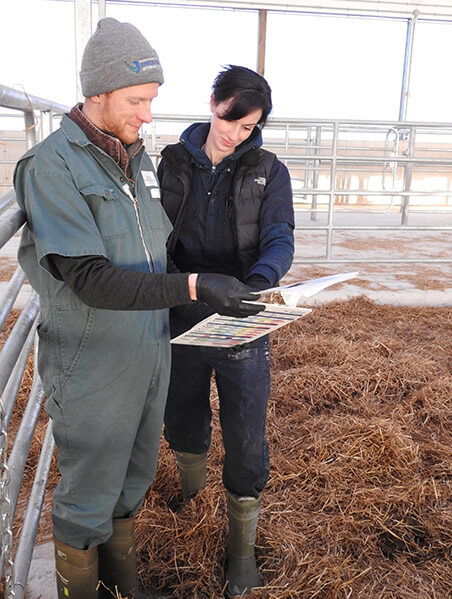Section 1 | An Introduction to Livestock Medicines
Page 04 /
How Antimicrobials Work and When to Use Them
This Section Reviews the Following:
1. How do Antimicrobials Work?
Antimicrobials can function in two ways, they:
Kill bacteria
- This is called a bactericidal antimicrobial
- While this type of antimicrobial kills bacteria, it will only work properly when it reaches a certain level in the body. It is very important when using bactericidal antimicrobial that the proper dosage is used. If the drug never reaches the appropriate level (e.g. the wrong dose is selected), it will not kill bacteria. Some examples of bactericidal antimicrobial include penicillins and cephalosporins
Slow down or stop bacterial growth
- This is called a bacteriostatic antimicrobial
- This type of antimicrobial will interfere with the reproduction of bacteria and slow its growth. It will not kill the bacteria. After the first dose of a bacteriostatic antimicrobial, bacteria will remain at the same number but will not grow. If a steady level of a bacteriostatic antimicrobial is maintained, the bacterial levels will decrease as they will naturally die or the body’s immune system will kill them. This is why it is important to not miss doses of bacteriostatic antimicrobial. Some examples of bacteriostatic antimicrobial include tetracycline and trimethoprim sulfa
Let’s view the impact of these antimicrobials on bacteria:
)
Important Note: Antimicrobials do not completely eliminate all of the disease-causing bacteria from the animal’s system. The immune system plays a major part in fighting bacterial disease by killing and removing the offending bacteria and repairing body damage caused during disease. Antimicrobials are a tool that prevents the immune system from becoming overwhelmed by bacteria.
2. Categorizing Antimicrobials Based on Human Importance
Antimicrobials are important for treating bacterial infections in both humans and animals. Some of these antimicrobials are essential for the treatment of serious, life-threatening infections in humans. Thus, to limit the development of resistance in life-saving antimicrobials, categories have been developed to highlight their importance in human health.
3. When are Antimicrobials Appropriate?
When deciding if an antimicrobial is necessary, it is important to make sure that you’ve correctly identified the cause of disease. This can be done by consulting with your veterinarian, who will work with you to look at the animal, evaluate their surroundings, inspect their feed, housing, and other management components and perform any diagnostic tests as necessary.
Work with your veterinarian to develop treatment protocols to determine which cases need antimicrobials!
)
When your veterinarian is choosing which antimicrobial medication to use, they will ensure:
- The disease is correctly identified (the diagnosis is accurate)
- An antimicrobial is needed
- The correct antimicrobial is chosen, taking into consideration its categorization and effectiveness
- The correct dosage will be provided
- Proper withholding times will be met to minimize risk of residues in food
4. Different Uses of Antimicrobials
Antimicrobials, depending on the label, can be used in a variety of ways. The three main uses are:
-
Therapeutic
-
Metaphylactic
-
Prophylactic therapy
